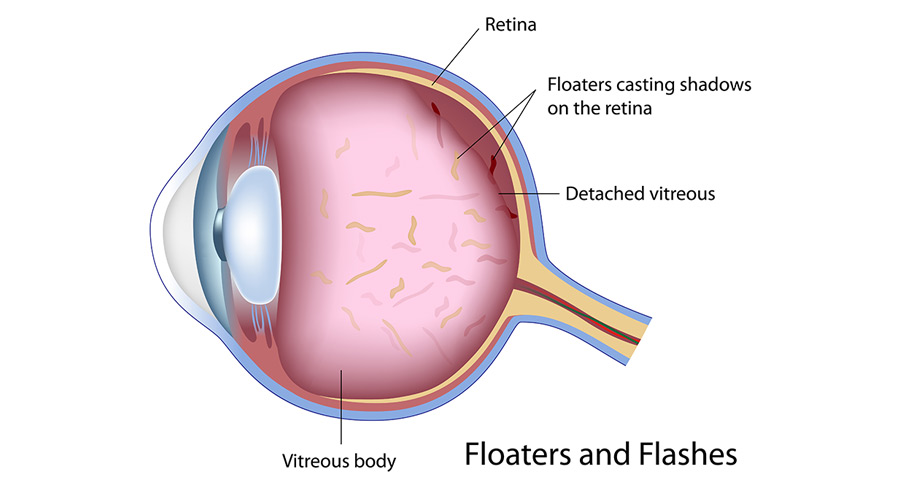What is Low Vision?
“Low vision” is the impaired vision that cannot be fully restored by surgery, medical treatments, or conventional eyeglasses or contact lenses. Low vision is not blindness. You are not alone; over 15 million Americans have some form of visual impairment. We are here to help. You can do something about low vision.
Our goal is to help you make the most of the eyesight you have so you can do more of the things you need and want to do — whether it’s reading a book, writing a letter, shopping, watching television or doing crafts.
When an individual’s eyesight cannot be corrected to better than 20/200 with lenses, then he/she is diagnosed as having low vision. Macular degeneration, diabetic retinopathy, and genetic diseases are just some of the causes of this diminished vision.
Unfortunately, many people are told that nothing can be done. While there may not be a cure, we can design and prescribe low vision systems for many of these individuals. Bioptic telescopes and microscopes are mounted in a pair of glasses to allow many of them to resume reading, cooking, hobbies, playing cards and in some cases driving – greatly improving their lifestyles.
Computer Vision

Computer Vision Syndrome (CVS) is complex eye and vision problems related to near work which are experienced during, or related to computer use. CVS is characterized by visual symptoms which result from interaction with a computer display or its environment. In most cases, symptoms occur because the visual demands of the task exceed the visual abilities of the individual to comfortably perform the task.
Computer Vision Syndrome (CVS) affects three out of four computer users. It is a series of symptoms related to extended periods of computer usage. Although it is no cause for panic, measures can be taken to relieve symptoms of CVS.
CVS can appear as a variety of symptoms. Headaches, eye strain, neck and back aches, sensitivity to light, blurred vision, double vision, and dry or irritated eyes are all possible problems related to CVS.
Any computer user can develop CVS. Your vision, your computer, and the environment where you use your computer are all factors that can lead to CVS.
There are many aspects of computers and the work environment in which they are used which may cause or contribute to the development of eye or vision difficulties. To obtain optimum visual comfort and work efficiency, all computer operators who could benefit from a visual correction should wear it. One way to help ensure this is to remove financial barriers to the employee for obtaining an eye examination and, when needed, treatment for eye and vision problems. This can often be accomplished by having an employer or third party sponsored program which provides eye care services for employees who work at computers.
As part of an eye care program for computer operators, it may be necessary to determine whether any treatment, usually in the form of eyeglasses, is specific to the computer task or whether the same glasses or treatment would be required for general vision needs. This may establish whether the employee is eligible to receive occupationally related eye care services under the program.
Whether a particular vision condition requires correction with eyeglasses or other treatment depends upon the clinical findings and the judgment of the examining doctor. However, the following criteria are recommended to help determine whether the care provided is computer related. These criteria are based upon the individual diagnosis and/or prescribed treatment. Since it is necessary for computer operators to have an eye and vision examination to determine whether these criteria are met, it is recommended that an examination be provided as part of the computer eye care program.
Vision problems occur frequently among video display terminal (VDT) workers. Most worker health surveys show that the most frequent health related complaints among workers at VDTs are visually related. However, more public and professional attention is currently being directed towards the avoidance of musculoskeletal disorders such as wrist problems (e.g., Carpal Tunnel Syndrome), bursitis, muscle strains (e.g., neck tension syndrome), tendon disorders (e.g., de Quervain’s disease), and tenosynovitis (e.g., trigger finger) among others. These disorders are generally classified as Cumulative Trauma Disorders (CTD) or as Repetitive Strain Injuries (RSI).
VDT related vision problems are at least as significant a health concern as the musculoskeletal disorders. Most studies indicate that visual symptoms occur in 50-90% of VDT workers, while a study released by NIOSH showed that 22% of VDT workers have musculoskeletal disorders. A survey of optometrists indicated that 10 million primary eye care examinations are provided annually in this country primarily because of visual problems at VDTs – not a small public health issue. Vision problems are pervasive among computer workers and are the source of worker discomfort and decreased work performance.
There appears to be a communication gap regarding the nature and extent of vision problems related to VDT use. The vision problems experienced by VDT workers are varied and are difficult to grasp and understand by those who don’t specialize in vision. The misunderstanding may also be the result of unfounded reports of cataracts caused by VDTs, exaggerated manufacturer claims about the need for UV and other radiation protection, and misleading statements about the effects of specialty tinted and coated lenses (e.g., computer glasses) among other products.
In order to improve communication and understanding of the vision problems at computers, the American Optometric Association supports the use of the term “Computer Vision Syndrome” (CVS) to broadly encompass the visual problems experienced at VDTs. CVS can be used to refer to the entirety of visual problems experienced by computer users and therefore improve communication and understanding of these problems. However, since there is not a single factor or visual disorder which causes visual problems at computers, CVS encompasses many different symptoms, disorders, and treatments.
Impact of Computer Use on Children’s Vision

When first introduced, computers were almost exclusively used by adults. Today, children increasingly use these devices both for education and recreation. Millions of children use computers on a daily basis at school and at home.
Children can experience many of the same symptoms related to computer use as adults. Extensive viewing of the computer screen can lead to eye discomfort, fatigue, blurred vision, and headaches. However, some unique aspects of how children use computers may make them more susceptible than adults to the development of these problems.
The potential impact of computer use on children’s vision involves the following factors:
Children often have a limited degree of self-awareness
Many children keep performing an enjoyable task with great concentration until near exhaustion (e.g., playing video games for hours with little, if any, breaks). Prolonged activity without a significant break can cause eye focusing (accommodative) problems and eye irritation.
Accommodative problems may occur as a result of the eyes’ focusing system “locking in” to a particular target and viewing distance. In some cases, this may cause the eyes to be unable to smoothly and easily focus on a particular object, even long after the original work is completed.
Eye irritation may occur because of poor tear flow over the eye due to reduced blinking. Blinking is often inhibited by concentration and staring at a computer or video screen. Compounding this, computers usually are located higher in the field of view than traditional paperwork. This results in the upper eyelids being retracted to a greater extent. Therefore, the eye tends to experience more than the normal amount of tear evaporation resulting in dryness and irritation.
Children are very adaptable
Although there are many positive aspects to their adaptability, children frequently ignore problems that would be addressed by adults. A child who is viewing a computer screen with a large amount of glare often will not think about changing the computer arrangement or the surroundings to achieve more comfortable viewing. This can result in excessive eye strain. Also, children often accept blurred vision caused by nearsightedness (myopia), farsightedness (hyperopia), or astigmatism because they think everyone sees the way they do. Uncorrected farsightedness can cause eye strain, even when clear vision can be maintained.
Children are not the same size as adults.
Since children are smaller, computers don’t fit them well. Most computer workstations are arranged for adult use. Therefore, a child using a computer on a typical office desk often must look up further than an adult. Since the most efficient viewing angle is slightly downward about 15 degrees, problems using the eyes together can occur. In addition, children may have difficulty reaching the keyboard or placing their feet on the floor, causing arm, neck or back discomfort.
Children often use computers in a home or classroom with less than optimum lighting
The lighting level for the proper use of a computer is about half as bright as that normally found in a classroom. Increased light levels can contribute to excessive glare and problems associated with adjustments of the eye to different levels of light.
Floaters & Flashes

As we get older we expect to have problems with our eyes, so we tend to ignore them.
One minor symptom that can cause a bigger problem, if not treated, is the occurrence of floaters and flashes. These are those tiny lights that seem to blink through your vision and that you can never catch when you direct your focus toward them.
Almost everyone sees floaters at some time, but they can occur more frequently and become more noticeable as we get older.
Floaters caused by posterior vitreous detachment are more common in people who:
- Are nearsighted
- Have undergone cataract surgery
- Have had certain types of laser surgery
- Have had inflammation of the eye
Because floaters or flashes can be an indication of a serious problem, you should contact our doctor when:
- You see floaters for the first time
- You notice an increase in the number or size of floaters
- You experience the sudden onset of flashes
In most cases, no serious problems are found, but a complete eye examination is important. If there is damage to the retina, it needs to be diagnosed and treated immediately to prevent vision loss.
Conjunctivitis
Conjunctivitis, sometimes referred to as pink eye, is an infection or inflammation of the conjunctiva – the thin, protective membrane that covers the surface of the eyeball and inner surface of the eyelids. It can be caused by bacteria, viruses and other germs that are transmitted to the eye through contaminated hands, towels, and eye makeup or extended wear contacts. It can also result from exposure to irritants such as chemicals, smoke or dust; or by pollen and other allergens. It is not uncommon for conjunctivitis to accompany a cold or flu.
Bacterial or viral conjunctivitis is contagious and tends to be prevalent in daycare centers and schools. It can spread by direct person-to-person contact, in airborne droplets that are coughed or sneezed, or from sharing makeup, towels and washcloths. Its hallmark sign is redness in the white of the eye that may be accompanied by increased tearing and/or a discharge that is watery or thick with mucus and pus and causes the eyelids to stick together.
Although usually a minor problem that improves within two weeks, some types can develop into serious corneal inflammation and vision loss if not treated. If you wear contact lenses and suspect you have conjunctivitis, discontinue wearing your contacts until the condition clears; you may also need to replace your contact lenses to prevent a recurrence.
There are four primary types:
Bacterial conjunctivitis can affect one or both eyes and is usually accompanied by a heavy, yellow discharge that may cause the eyelids to stick together in the morning. Caused by a variety of bacteria, bacterial conjunctivitis is treated with antibiotic eye drops and typically resolves within 5 days. If there is concurrent inflammation of the eyelids, your eye care provider may also recommend an eyelid scrub to remove bacteria and dried mucous from the lid margin.
Viral conjunctivitis is often caused by adenoviruses, the family responsible for upper-respiratory illnesses such as colds, but can also result from herpes simplex and other viruses. This type can also affect either one or both eyes, and usually causes a lighter discharge. Although viral conjunctivitis usually produces a superficial case that clears on its own within two weeks, you should still see your eye care provider to ensure it doesn’t lead to a more serious infection that can involve the cornea.
Antibiotics are ineffective for viral conjunctivitis. Artificial tears may be used, or your doctor may recommend a topical anti-inflammatory drop to relieve discomfort. Topical or oral anti-herpetic medications can help suppress herpes viral infections.
Allergic conjunctivitis results from a response to airborne pollen, dust, smoke, or environmental agents. Both eyes are usually affected and may itch, tear excessively and discharge a stringy mucus. You may also have other allergic reactions, such as a runny or itchy nose. Depending on the severity, your eye doctor may prescribe topical drops that are effective in relieving the itching and discomfort. A very specific kind of allergic conjunctivitis may occur in contact lens wearers, especially if they do not clean the lenses well or if the lenses are not replaced often enough. Several treatments are available for this condition, including prescription allergy drops, changing contact lens solutions to keep the lenses cleaner, and changing to lenses that are replaced more frequently such as daily disposable contacts.
Chemical conjunctivitis is caused by exposure to irritating liquids, powders, or fumes and requires immediate action. Common irritants in include chlorine, detergents, fuels, ammonia, smoke and pesticides. First, flush the eye with cold water continuously for 15 minutes, then have the eyes evaluated by your eye doctor. For minor irritants such as chlorine, often artificial tears will effectively resolve the irritation. For chemicals burns from a strong acid or base, emergency medical treatment is needed.
Conjunctivitis- Signs and Symptoms
Viral conjunctivitis
- Watery Discharge
- Irritation
- Red Eye
- Usually begins with one eye but may spread easily to the fellow eye
Allergic conjunctivitis
- Usually affects both eyes
- Itching
- Tearing
- Swollen eyelids
Bacterial conjunctivitis
- Stringy discharge that may cause the lids to stick together, especially after sleeping
- Swelling of the conjunctiva
- Redness
- Usually affects only one eye but may spread to the fellow eye
If you suspect conjunctivitis, see an eye doctor as soon as possible.
Your eye will be examined to determine the specific cause of the inflammation and your eye doctor will determine what the best course of treatment to resolve the condition.
People with conjunctivitis should:
- Wash their hands after touching or wiping their eyes
- Avoid touching other people unless hands are freshly washed
- Throw away or carefully wash items that touch their eyes
- Not share eye makeup or other items used on their eyes (for example, towels, or tissues)
- Cover mouth and nose when coughing or sneezing
- Consult your doctor in case medication is needed
- See a doctor if the eye discharge is yellow, if the eye or eyelid is red, or if the symptoms don’t start improving after 2-3 days. See a doctor immediately if the symptoms suggest a more severe infection
- Be excluded from school and child care settings until cleared by a health care provider that it is not contagious, after taking antibiotics for 24 hours, or until symptoms have resolved
Ocular Allergies
Allergies affect over 20% of the general population and are on the rise in many developed countries. The specific reason for the increasing prevalence of allergies has not been determined; some believe it is due to the effects of pollution in urban areas while others consider that modern lifestyles don’t allow for enough childhood exposure to allergens to become acclimated to them.
Allergies can take many forms, affecting various organs or tissues. Ocular allergies are among the most bothersome forms of allergic reaction.
The characteristic signs and symptoms of ocular allergies include:
- Itching
- Redness
- Watery eyes
- Swelling of the eyes and eyelids
Ocular allergies are often accompanied by allergic rhinitis (nasal symptoms). This is partly due to the fact that the eyes and nose are so closely connected by the tear ducts; substances that enter the eye can then flow downward into the nose.
Symptoms include:
- Runny nose
- Sneezing
- Congestion
- Sneezing
- Congestion
Eye allergies are no different from allergies that affect your sinuses, nose or lungs. When an allergen comes in contact with your eyes, your body releases histamine – a chemical produced in reaction to a substance that the immune system can’t tolerate. Special cells called mast cells make histamine. These cells are present throughout the body but are highly concentrated in the eyes. Location of allergy symptoms depends somewhat on where the allergen has come into contact with your body. Ocular allergens tend to be airborne (as are most other allergens).
The most frequent allergic triggers include:
Some triggers irritate the eyes but are not true allergies:
- Cigarette smoke
- Perfume
- Diesel Exhaust
The Eyes’ Response to Ocular Allergens
When exposed to these allergens, the response in the eye is nearly immediate:
- First, itching sets in and can become persistent and extremely bothersome if exposure to the allergen is continued.
- Sortly after itching, redness of the eyes follows and can last somewhat longer, as the blood vessels of the eye are slower to recover.
- The swelling of the eyes and eyelids comes to its peak later than the itching, as swelling is also caused by the blood vessels letting fluids out into the tissue around them. Swelling is the sign of ocular allergies slowest to disappear, due to the time it takes for the displaced fluid to be removed.
- The itching can be considered the most uncomfortable symptom, whereas the swelling and redness are most bothersome in terms of appearance.




